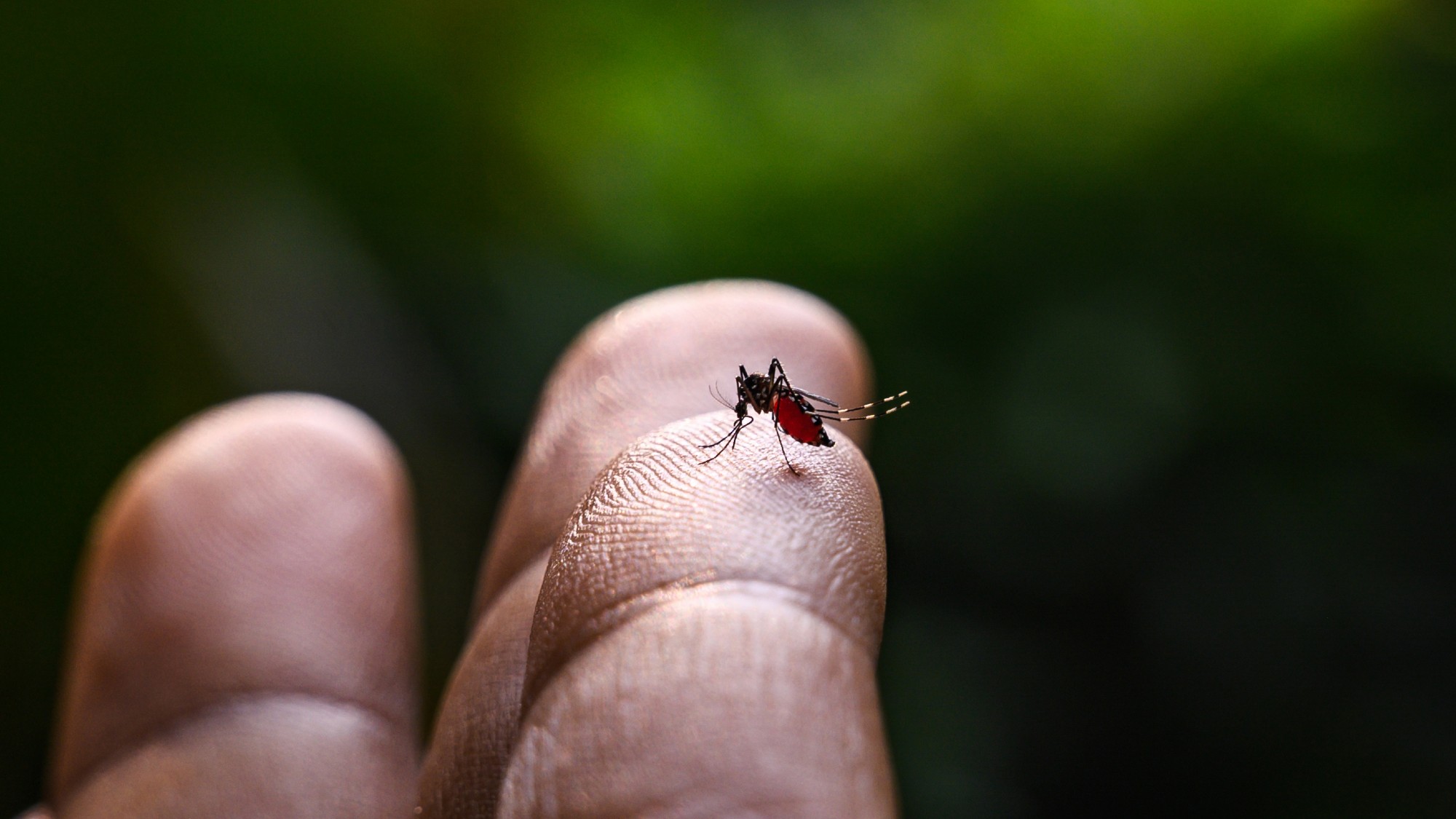The EEE virus is spreading in the US
The mosquito strikes again


A mosquito-borne virus is making a comeback: Eastern equine encephalitis (EEE). While not actually new, cases are extremely rare. Nonetheless, there have been higher instances than usual in the U.S. this year. If a case is severe, it has the potential to be deadly, and there is no cure or prevention for the disease. Illnesses like EEE are only going to become more common as the climate continues to warm.
What is EEE?
EEE has been spreading across the northeastern U.S. The virus is spread through mosquitos but is rare and deadlier than the West Nile virus. "Approximately 30% of people who develop severe eastern equine encephalitis die, and many survivors have ongoing neurologic problems," said the Centers for Disease Control and Prevention. "Definitely, I'd say New England and the Gulf Coast are the two areas in the U.S. where it's mainly occurred in the past," David Hamer, a professor of global health and medicine at the Boston University School of Public Health, said to The Hill. "Massachusetts has had hundreds of cases over a 70-year period," Hamer added. "There may not be any for a couple years, and then there's another case or two, although we believe that it may be occurring a little more frequently."
The good news is that most people do not experience symptoms. "In 95% of cases, the infection has no symptoms at all, and the person is really quite well and doesn't know they have the virus," Ruanne Barnabas, the chief of the Division of Infectious Diseases at Massachusetts General Hospital, said to The Hill. However, the virus creates a bad situation for people who do experience symptoms. "In 5% of cases, people do have symptoms, including fever and chills. And then it can actually affect the central nervous system, and they can develop confusion, abnormal movements and encephalitis as well." In the worst cases, EEE can lead to death. The disease also has no vaccines or medicines to prevent or treat it. Instead, people should protect themselves from mosquito bites by using insect repellant and wearing long sleeves.
The Week
Escape your echo chamber. Get the facts behind the news, plus analysis from multiple perspectives.

Sign up for The Week's Free Newsletters
From our morning news briefing to a weekly Good News Newsletter, get the best of The Week delivered directly to your inbox.
From our morning news briefing to a weekly Good News Newsletter, get the best of The Week delivered directly to your inbox.
Will EEE get worse?
Along with people, the disease has also appeared in animals including horses, llamas and alpacas. Approximately 90% of horses infected with EEE have died. Dogs and cats are at much lower risk. The disease is not transmissible between animals and can only be passed through mosquitos in both humans and animals. It is also difficult to determine who is most at risk for severe EEE. "If you look at the cases, it seems to hit, you know, young teenagers, 30-year-olds, 40-year-olds — I mean healthy people that don't have clear risk factors. And so, I think everybody needs to be cautious," Hamer said.
The growing prevalence of mosquito-borne illnesses is largely due to climate change. Mosquitos thrive in warmer temperatures, and their range is rapidly expanding. Diseases like EEE are also appearing in regions where the diseases were not present before. "We've got milder winters, we've got warmer summers and we've got extremes in both precipitation and drought," Theodore G. Andreadis, a researcher who studied mosquito-borne diseases at the Connecticut Agricultural Experiment Station, said to Grist. "The impact that this has on mosquito populations is probably quite profound."
A free daily email with the biggest news stories of the day – and the best features from TheWeek.com
Devika Rao has worked as a staff writer at The Week since 2022, covering science, the environment, climate and business. She previously worked as a policy associate for a nonprofit organization advocating for environmental action from a business perspective.
-
 6 lovely barn homes
6 lovely barn homesFeature Featuring a New Jersey homestead on 63 acres and California property with a silo watchtower
-
 Film reviews: ‘Marty Supreme’ and ‘Is This Thing On?’
Film reviews: ‘Marty Supreme’ and ‘Is This Thing On?’Feature A born grifter chases his table tennis dreams and a dad turns to stand-up to fight off heartbreak
-
 Political cartoons for December 14
Political cartoons for December 14Cartoons Sunday's political cartoons include a new White House flag, Venezuela negotiations, and more
-
 Stopping GLP-1s raises complicated questions for pregnancy
Stopping GLP-1s raises complicated questions for pregnancyThe Explainer Stopping the medication could be risky during pregnancy, but there is more to the story to be uncovered
-
 RFK Jr. sets his sights on linking antidepressants to mass violence
RFK Jr. sets his sights on linking antidepressants to mass violenceThe Explainer The health secretary’s crusade to Make America Healthy Again has vital mental health medications on the agenda
-
 Vaccine critic quietly named CDC’s No. 2 official
Vaccine critic quietly named CDC’s No. 2 officialSpeed Read Dr. Ralph Abraham joins another prominent vaccine critic, HHS Secretary Robert F. Kennedy Jr.
-
 Nitazene is quietly increasing opioid deaths
Nitazene is quietly increasing opioid deathsThe explainer The drug is usually consumed accidentally
-
 This flu season could be worse than usual
This flu season could be worse than usualIn the spotlight A new subvariant is infecting several countries
-
 More adults are dying before the age of 65
More adults are dying before the age of 65Under the radar The phenomenon is more pronounced in Black and low-income populations
-
 Ultra-processed America
Ultra-processed AmericaFeature Highly processed foods make up most of our diet. Is that so bad?
-
 The plant-based portfolio diet invests in your heart’s health
The plant-based portfolio diet invests in your heart’s healthThe Explainer Its guidelines are flexible and vegan-friendly
